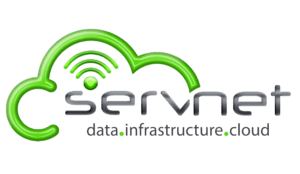Effective IT Asset Management: Key Strategies for Better Control and Less Risk
How do you manage your IT asset management?
In the current digital age, businesses rely heavily on technology to streamline their processes, enhance their services, and remain competitive. While IT assets like hardware, software, and data are critical components in making this possible, taking care of them can present numerous challenges. From keeping track of hundreds of devices and applications to safeguarding sensitive information and regulating compliance, managing IT assets requires a comprehensive and proactive approach.
This is where IT asset management (ITAM) comes in. Effective ITAM strategies are essential for organizations to hold better control over their technology, minimize the risk of downtime and data breaches, and optimize their investments in IT. In this post, we’ll look at some of the key strategies that can help with managing IT assets effectively.
1. Establish a Centralized IT Asset Management Solution
To start, businesses need to establish a centralized IT asset management system that adequately tracks and monitors all IT assets. This can include everything from hardware to software to data, network devices, and more. With a centralized ITAM system, businesses can get a clear view of all their assets, how they’re being used, and who is using them. Businesses can also set up automatic alerts and notifications for any changes or potential security threats.
2. Adopt a Lifecycle Approach
Successful IT asset management strategies must adopt a lifecycle approach. This means managing each IT asset’s lifecycle from acquisition to disposal. With this approach, businesses can establish clear protocols for the deployment, maintenance, decommissioning, and disposal of IT assets. This helps to minimize IT asset costs, achieve better ROI, and reduce the risk of cybersecurity threats.
3. Regularly Audit IT Assets and Their Usage
Conducting regular IT asset audits and assessments is a crucial aspect of effective ITAM. By doing so, businesses can ensure that their assets are being used efficiently, identify any technical issues or potential security concerns, and decisions on what assets need upgrading or replacing. Regularly auditing IT helps organizations stay in compliance with industry regulations, ensure they’re not exposed to unnecessary risks and maintain control over IT assets.
4. Use Automated IT Asset Discovery Tools
Utilizing automated IT asset discovery tools can enable businesses to maintain up-to-date inventory records of their IT assets. Automated discovery tools simplify ITAM by allowing businesses to automatically identify and document changes or upgrades made to IT assets. This centralized data helps businesses make more informed decisions about their technology landscape and ROI for their assets better.
5. Establish Asset Use Policies
Businesses should establish asset use policies to ensure that employees use IT assets safely and appropriately. Such policies should address areas such as managing personally identifiable information, safe storage and disposal of devices, safeguarding intellectual property, and the proper use of authorized software. Creating these policies helps to minimize IT asset risk and ensure that employees can operate efficiently and safely within the organization.
Conclusion
Effective IT asset management strategies are essential for businesses to ensure that their IT assets are under control, maximized and well-managed. A comprehensive IT asset management plan helps to ensure that organizations get the most value from their tech investments while minimizing the risk of cyberattacks, technology failures, or non-compliance. By having a clear view of all IT assets, establishing and adhering to protocols, and keeping policies up-to-date, businesses can streamline their IT operations, enhance their productivity, and improve their overall profitability.





